#thylacinus cynocephalus
Photo



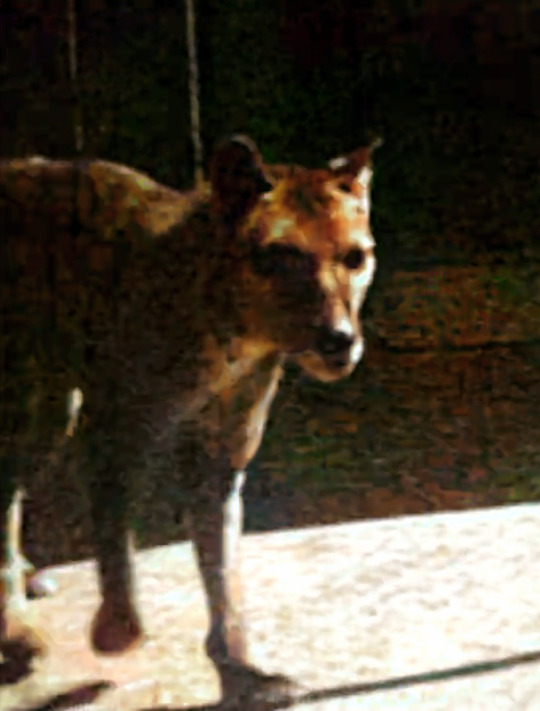
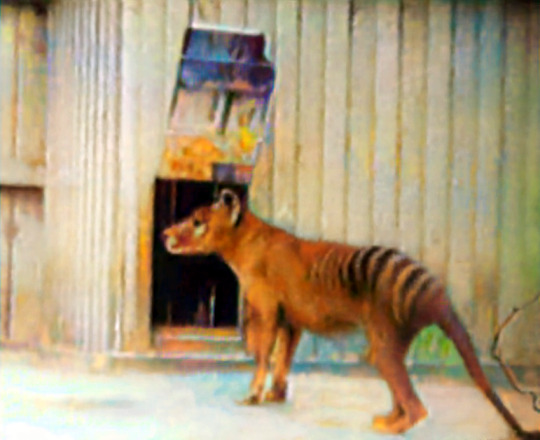
Colorized Thylacines pt. 3
#its like i ring a dinner bell each time i upload these#yall never disapoint#thanks for loving t. cynocephalus as much as i do#Thylacinus Cynocephalus#thylacine#thylacinus#Tasmanian tiger#tasmanian wolf#extinct#extinct species#historic photo
3K notes
·
View notes
Text
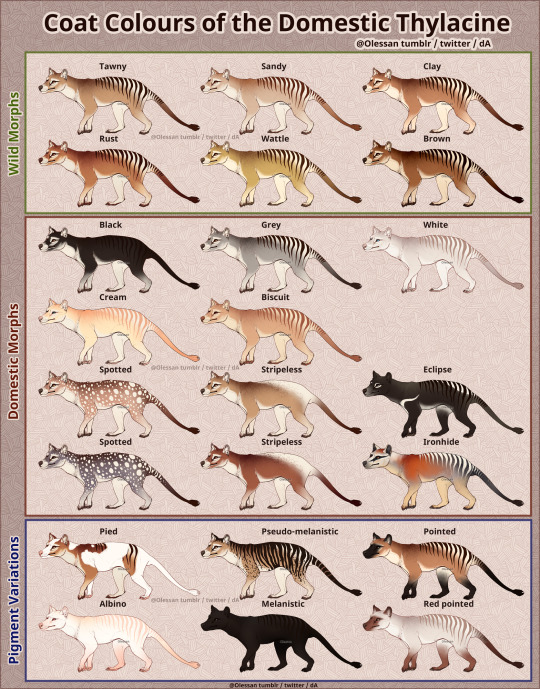
The central continent of my worldbuilding world is dominated by marsupials and monotremes, and birds. There are several species of thylacine, and one — which is essentially our Thylacinus cynocephalus — is domesticated.
They are a recent domestication, with about 250 generations having passed. Compared to the wild ancestors, they have similar builds, but with more colours, variation in size, and longer lifespans (12-20 years). They have lost their natural reclusive nature and though shy, are friendly and inquisitive and trainable to a point. Most prefer to be solitary or tolerate the presence of 1-2 others, though get along well with other calm-tempered species. Their prey drive is greatly reduced but many suffer anxiety in loud or busy environments.
Lil update: If you would like fancy thylacines to put places, I turned this into a poster/prints, and there's also a sticker <3
#artists on tumblr#Thylacinus cynocephalus#thylacine#Tasmanian tiger#thylacine art#art#Tasmanian wolf#(I really dislike the 'tasmanian wolf' name but w/e)#animals#Australian megafauna#olessan art#olessan's headworld#creature design#I feel that this one (the base/tawny) is MUCH closer to accurate to the animal and technically sound than my previous attempt in Sept 2020#however this is for a fantasy world which is why there are quoll and numbat and etc markings
3K notes
·
View notes
Text
Thylacine portrait on black paper
I love how they are marsupial alternative to a dog, they look familiar yet alien/different to what we're used to see.
Prints available on my Redbubble
(or DM me if you want the original)
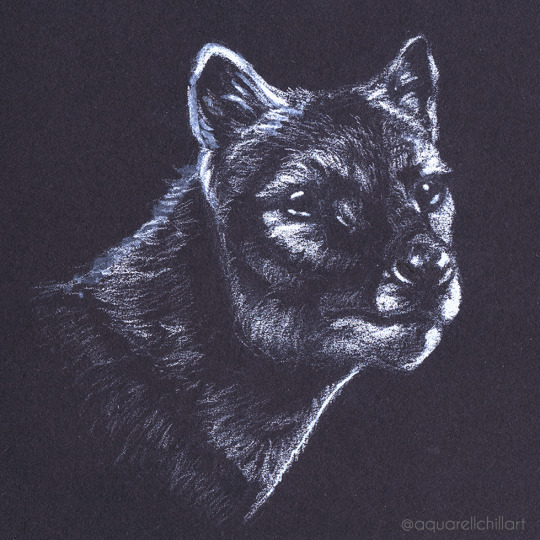
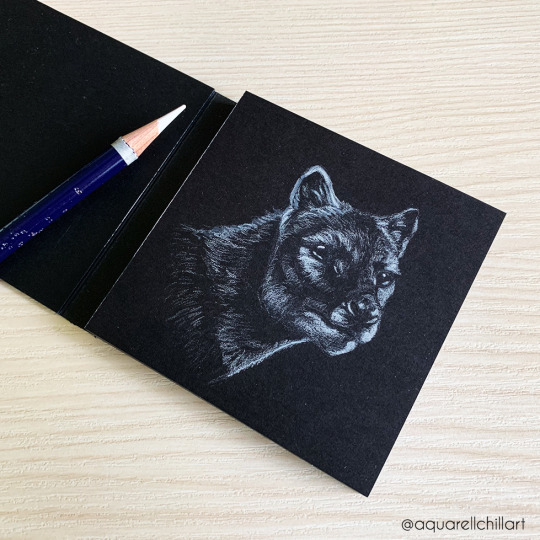
#thylacine#extinct animals#tasmanian tiger#tasmanian wolf#extinct species#thylacines#thylacinus cynocephalus#marsupial#mammal#art print#traditional drawing#black paper#my art
131 notes
·
View notes
Text
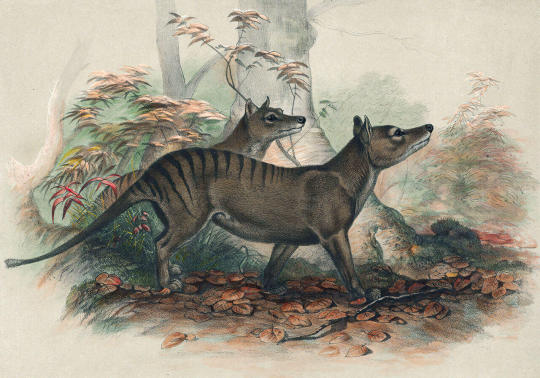
Thylacino (Thylacinus cynocephalus) | Joseph Wolf (1820-1899)
236 notes
·
View notes
Text


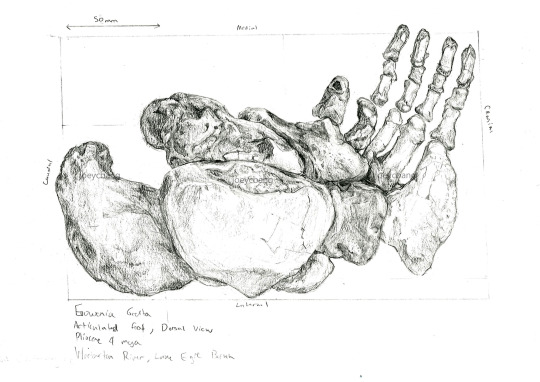


I took a four week intensive on Scientific Illustration over the summer, and these are what I consider my best work. It was a very interesting experience and I don't think I've learned so much in that short of a period before.
Specimens:
Thylacine Thylacinus cynocephalus: Copy of WAM 13.2.16
Red Kangaroo Osphranter rufus: FUR 272
Euowenia grata: FU 2671
References:
Camens, A. and Wells, R. (2009) ‘Diprotodontid footprints from the Pliocene of Central Australia’, Journal of Vertebrate Paleontology, 29(3), pp. 863–869. Available at: https://doi.org/10.1671/039.029.0316.
Camens, A.B. and Wells, R.T. (2010) ‘Palaeobiology of Euowenia grata (Marsupialia: Diprotodontinae) and its Presence in Northern South Australia’, Journal of Mammalian Evolution, 17(1), pp. 3–19. Available at: https://doi.org/10.1007/s10914-009-9121-2.
#joeycbang art#scientific illustration#paleoblr#paleoart#orthographic projection#extinct species#extant species#thylacinus cynocephalus#thylacine#osphranter rufus#red kangaroo#euowenia grata#diprotodontidae#diprodontia#marsupials#megafauna#australian megafauna#australian fauna#id in alt text#so yea this is why i haven't had any art for my main in a bit. i've been a busy boy#yes i made ANOTHER blog for this i'm blogs georg
6 notes
·
View notes
Text
Thylacinus cynocephalus
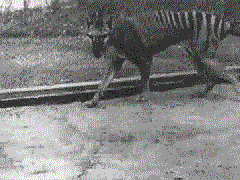
3 notes
·
View notes
Text
lol sorry
sorry to my mutuals for all the thylacine content; I'm secretly a cryptozoologist at heart
6 notes
·
View notes
Text

21. CAT - Vivid Shadows 2023
“That’s what you defaults never seem to understand. Once you get a taste of real you, it’s all over. There’s no going back.”
This is part of Vivid Shadows 2023, our art book inspired by transformation, mythology, and general monsterfuckery. We worked really hard on this, and your support means the world. Consider picking up the PDF here!
Full background text for those who are curious:
Name: Senait “KASKARA” Zain
Charges: DESERTION, THEFT OF UNSP GENOME EDITING TECHNOLOGY, BREACH OF INFORMATIONAL SECURITY, MURDER IN THE SECOND DEGREE, ASSAULT WITH A DEADLY WEAPON, PUBLIC INDECENCY
WARNING: Subject is extremely dangerous and trained in advanced UNSP-proprietary close quarters combat techniques. She has gene splices that augment her reflexes and strength far beyond the capabilities of an unmodified human. Engaging with surprise and numbers is highly advised.
SPLICES INCLUDE:
Acinonyx jubatus
Archilochus colubris
Dendroaspis polylepis
Felis catus
Hypsibius dujardini
Lynx pardinus
Mustela putorius
Panthera onca
Panthera tigris
Thylacinus cynocephalus
Xenopsylla cheopis
DOB: 1/21/2025
POB: Asmara, Eritrea
SEX: F*
HGT: 232cm
HAIR: BLK
WGT: 105kg
EYES: GOLD
The United Nations Emergency World Government is offering a reward of up to U24,000 for information leading to the arrest and/or conviction of Senait “Kaskara” Zain.
An extended U2.4M reward is offered to anyone who captures or kills the subject and brings their remains to any UNSP outpost for genetic verification.
Collateral damage inflicted in pursuit of the fugitive is acceptable. Up to U1M of damages will be expensed by the UNSP, after which the remaining damages will be deducted from the bounty.
KNOWN AUGMENTATIONS:
-UNSP Genetic enhancement package [details confidential]
-Metatungston Carbide Claws and Teeth
-Zaibatsu Cardiovascular Engine HRM4290
-Tarkus Subdermal Nanomesh 550V
-Alacrity Sensory Enhancement Suite 7
-Grasshopper Mobility Plus Muscle fiber Sheathing v6360
-Symtek Nightline Ocular Feedback Drivers
- Immunovox Regua internal Nanoswarm IS2230
The full extent of the modifications the subject has made to their body is unknown, and as such this list should be assumed to be incomplete. Information regarding additional genetic and cybernetic modifications will be rewarded at a lesser percentage of the full reward.
699 notes
·
View notes
Text

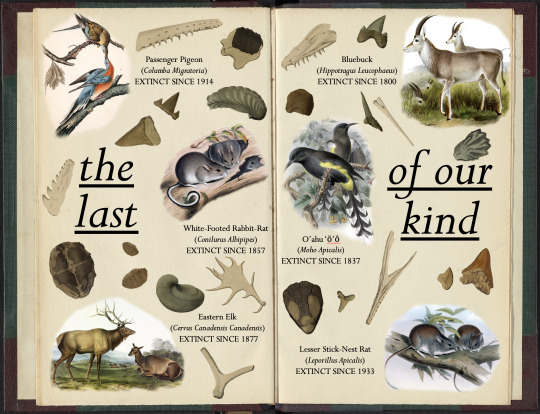
An Account of the First Aërial Voyage in England – Vincent Lunardi // A Pictorial Atlas of Fossil Remains – Gideon Algernon Mantell, James Parkinson, Edmund Tyrell Artis // Potorous Platyops – John Gould // Thylacinus Cynocephalus, Juvenile – Joseph Wolf // Choeropus Castanotis – John Gould // Hippotragus Leucophaeus – Joseph Smit, Joseph Wolf // Hapalotis Albipipes – John Gould // Pyrenean Ibex – Richard Lydekker, Joseph Wolf // Eastern Elk – John James Audubon // Royigerygone Insularis – Gregory Macalister Matthews, Henrik Grönvold // Sceloglaux Albifacies – John Gerrard Keulemans // Leporillus Apicalis – John Gould // Columba Migratoria – John James Audubon, J. T. Bowen // Moho Apicalis – John Gerrard Keulmans // ...Familiar Place – Lucy Dacus
for @artists-ache 💙🌹 📖
#okay so this is pretty different from my usual style#so if you don't like it just let me know and i'm happy to make a new/different edit with the same lyrics!#i was aiming for sort of a natural history/field notes type look#but idk if i achieved it 😅#natural history#extinction#extinct animals#extinct species#recently extinct#extinct birds#fossils#...familiar place#...familiar place lucy dacus#no burden#no burden album#no burden lucy dacus#lucy dacus#rose 🌹📖#request 🥰#art#art history#lyrics#lyric art#tw bones
496 notes
·
View notes
Text
#ThylacineThursday:

'The Tasmanian Tiger (Thylacinus Cynocephalus)” - hand-coloured lithographic plate
Plate XII in Gerard Krefft’s The Mammals of Australia (1871), illustrated by sisters Helena & Harriet Scott; this one by Harriet.
National Library of Australia collection: http://nla.gov.au/nla.obj-33627803
#animals in art#women artists#Thylacine#australian animals#Scott Sisters#Harriet Scott#Harriet Scott Morgan#19th century art#australian art#natural history art#natural history illustration#her natural history#scientific illusration#historical sciart#book art#book plate#lithograph#Gerard Krefft#Thylacine Thursday#extinct animals
263 notes
·
View notes
Text
The Tasmanian tiger has a long, checkered history that now includes being the first extinct animal family from which scientists have recovered RNA, the molecule that brings a species' genome to life.
With a specially modified protocol, a Swedish team extracted millions of RNA strands from the skin and muscle of a 132-year-old Tasmanian tiger, or thylacine.
Known to scientists as Thylacinus cynocephalus, the striped, carnivorous marsupial was hunted to extinction on the island of Tasmania in Australia in the 1930s.
Recovering RNA – the genetic material that translates the information encoded in DNA into proteins – from extinct animals like the thylacine could open a trove of information on gene activity long thought lost.
Continue Reading.
164 notes
·
View notes
Text

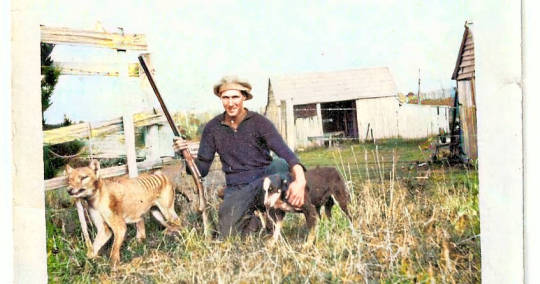
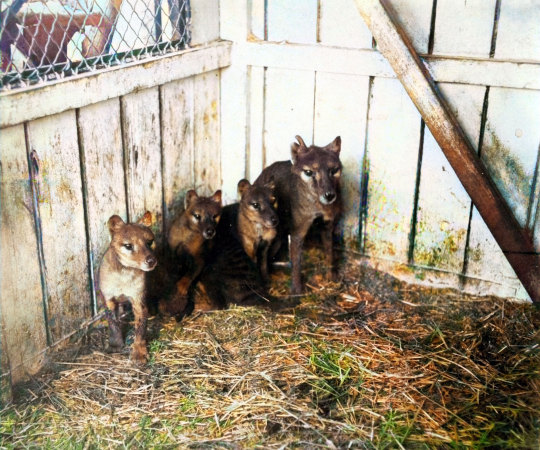
-Top pictured is one of the Burrell photographs. Which were edited to be close ups to depict a 'thylacine in the wild' later debunked to be a captive thylacine.
-Middle pictured is the Wilfred batty thylacine which is the last recorded thylacine shot in the wild.
-Bottom pictured is the Beaumaris zoo family group.
#thylacine#tasmanian tiger#thylacinus#thylacinus cynocephalus#historic photo#extinct#extinct species#marsupial#Restoration
1K notes
·
View notes
Text




A Twitter thread by author and Assistant Director of the University Museum Of Zoology, Jack Ashby, on a recent paper discussing the identity of the last captive thylacine.
The paper itself can be found here, and its abstract reads:
"The last known captive Thylacine (Thylacinus cynocephalus) died at the Beaumaris Zoo on Hobart's Queen's Domain on the evening of Monday the 7th September 1936. However, within six months of its death the date of its capture was being inaccurately reported. Over the ensuing years there has been much debate and controversy relating to its source, sex, period of display, welfare, and more recently the fate of its remains. Whilst there has been some agreement, significant confusion has been created by the disparate, fragmentary, and often contradictory sources of evidence, with five distinctly exclusive provenances proposed for this specimen. For a species whose extinction was hastened by anthropogenic interventions, we have a moral obligation to preserve as much factual detail as possible about the Thylacine. To this end, the authors have undertaken a thorough review of the hypotheses advanced by Smith (1981) & Paddle (2000); Guiler (1986) & Bailey (2001); Sleightholme et al., 2020; Linnard et al., 2020 and Paddle & Medlock (2023), and have evaluated each against a synthesis of the evidence accrued over the previous 93 years to examine whether a definitive identification and history of the last known captive Thylacine can be determined. The authors found a sufficiently strong correlation between the evidence and the position advanced by Linnard et al., (2020) to maintain that the last captive Thylacine can be identified as the juvenile male captured at Penney's Flats on the Arthur River by 19 year old Roy and 59 year old Dan Delphin on the evening of Monday 7th July 1930."
106 notes
·
View notes
Text

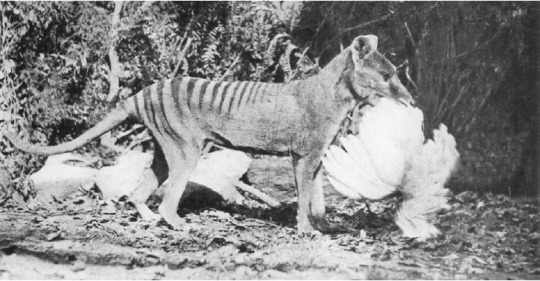
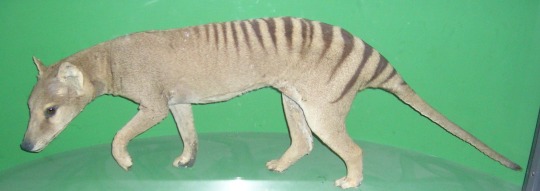
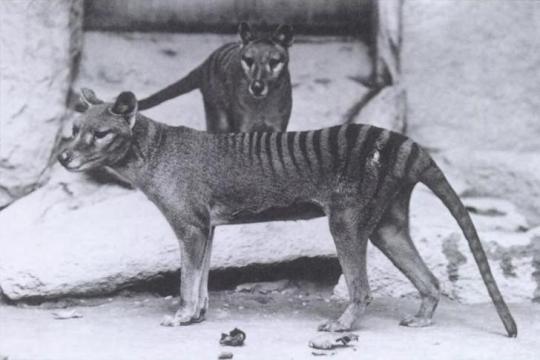

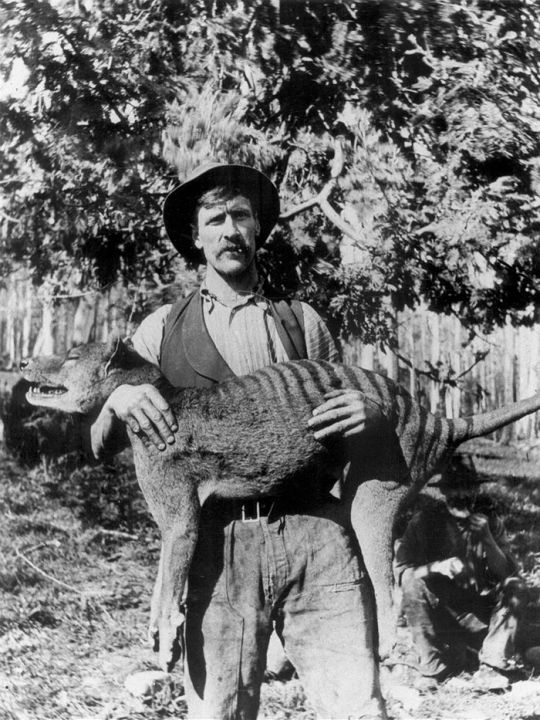


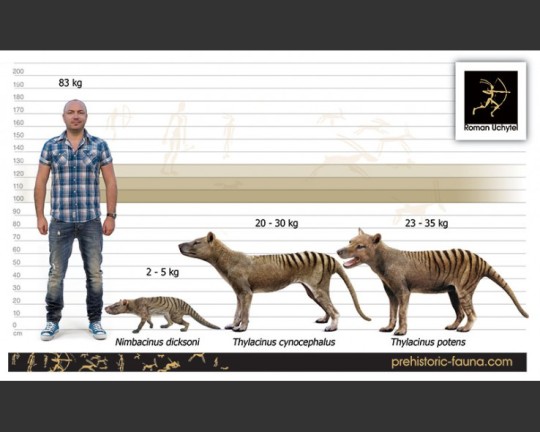
Thylacine
(temporal range: 2 mio. years ago until 7. September 1936)
[text from the Wikipedia article, see also link above]
The thylacine (/ˈθaɪləsiːn/; binomial name Thylacinus cynocephalus), also commonly known as the Tasmanian tiger or Tasmanian wolf, is an extinct carnivorous marsupial that was native to the Australian mainland and the islands of Tasmania and New Guinea. The thylacine neared extinction throughout most of its range in mainland Australia by about 2,000 years ago, most likely because of the introduction of dingoes or due to climate change. Prior to European settlement around 5,000 remained in the wild on Tasmania. Beginning in the nineteenth century they were perceived as a threat to the livestock of farmers and bounty hunting was introduced. The last known of its species died in 1936 at Hobart Zoo in Tasmania. The thylacine is widespread in popular culture and is a cultural icon in Australia.
The thylacine was known as the Tasmanian tiger because it displayed dark transverse stripes that radiated from the top of its back, and it was known as the Tasmanian wolf because it had the general appearance of a medium-to-large-size canid. The name thylacine is derived from thýlakos meaning "pouch" and ine meaning "pertaining to", and refers to the marsupial pouch. Both sexes had a pouch. The females used theirs for rearing young and the males used theirs as a protective sheath, covering the external reproductive organs. It also had a stiff tail and could open its jaws to an unusual extent. The thylacine was an apex predator, though exactly how large its prey had been is disputed. Its closest living relatives are the other members of Dasyuromorphia including the Tasmanian devil.
The thylacine had died out on New Guinea and very few were left on the Australian mainland before European settlement of the continent. Intensive hunting on Tasmania is generally blamed for its extinction, but other contributing factors were disease, the introduction of and competition with dingoes, human encroachment into its habitat and climate change. The remains of the last known thylacine were discovered at the Tasmanian Museum and Art Gallery in 2022. Since extinction there have been numerous searches and reported sightings of live animals, none of which have been confirmed.
The thylacine has been used extensively as a symbol of Tasmania. The animal is featured on the official coat of arms of Tasmania. On 7 September, the date in 1936 on which the last known thylacine died, National Threatened Species Day is commemorated in Australia. Universities, museums and other institutions across the world research the animal. Its whole genome sequence has been mapped and there are efforts to clone and bring them back to life.
101 notes
·
View notes
Text

The Thylacine (Thylacinus cynocephalus) | Joseph Wolf | Zoological sketches v.1 (1861) | Biodiversity Heritage Library | Flickr | Public domain
1 note
·
View note
Text

Thylacinus cynocephalus, sketched with a Sheaffer Targa fountain pen and Diamine Earl Grey ink.
158 notes
·
View notes